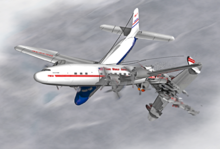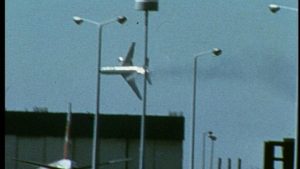| The President has proposed and congress is moving forward with a plan to privatize the US Air Traffic Control (ATC) System. The proponets say that the current system is too slow to embrace improvements and this is mostly related to the unsure budget process that makes planning these improvements next to impossible. This article looks at the potential safety implications with this proposal.
The principal charge by General Aviation Organizations, they represent people that own those small private planes, is that the proposal will turn the US ATC over to the Airlines. Assuming this is true, what kinds of issues or second order effects could this present? And why would you take the current system that has effectively made commercial air travel safer than your living room and take the chance that this change could hurt that record. |
 |
I just want to point out that we have had the Airlines in charge of ATC before. After World War II, the airlines did most of the communications with their aircraft. The FAA or Civil Aeronautics Board acted like an information broker, passing information about traffic to between the airlines, but rarely talked to aircraft. This system lasted about 10 years. That all changed after the 1956 mid air collision of two commercial airliners over the Grand Canyon. The disaster over the Grand Canyon left little doubt that a better system was required if one wanted to grow the commercial use of air travel. This lead to the system of radars and FAA controllers scattered around the country and one of the best safety records in the world. But this isn’t our only evidence. |
| Over the years manufactures and operators have proven that they need some level of oversight when it comes to safety. Car manufactures wined and cried over seat belts and air bags. We went from 50K lives lost every year in car accidents to 35K a year. At the same time our population doubled, this is over a 50% reduction in fatalities in car accidents. |
| The airlines have proven they need oversight as well. The 1979 crash of a DC-10 in Chicago showed that money can be more important than safety when it comes to the airlines. In the crash, one of the engines fell off the plane because the Airline was taking short cuts with maintenance. The practice, that was the primary cause of the crash, was used through out the industry because it saved about 200 man hours when removing and replacing an engine on a DC-10. |  |
| The practice was used in spite of warnings from the manufacture recommending against the practice, costs were driving these decisions not safety. Before the crash, the practice was seen as innovative by airline management. I’m sure the families of the 271 victims didn’t see this as innovation. |
| So what does all of this mean? If the General Aviation community is right and this is a take over of the ATC by the Airlines, it is likely not good for safety and something everyone that uses commercial air travel should be concerned about. We will have more to say in the future on this topic.
What about the slowness issue? The U.S. has the largest aviation system on the planet. There are more planes than any place else and many of the improvements in the ATC system require Aircraft owners to install equipment to tell the ATC where the aircraft is. So, the slowness isn’t just the budget process, it is also the owner of a $20,000 airplane that does want to spend $5,000 on equipment and installation so the FAA’s NexTGen ATC can track him will likely wait until the last second before he lays down that cash. Currently, the radar systems on the ground track that $20,000 airplane. On 1 Jan 2020 the owner of that $20,000 aircraft will have to have spend $5,000 to purchase and install the NexTGen equipment or he will not be able to fly most anywhere on the East Coast of the US. |
 Second Order Effects
Second Order Effects